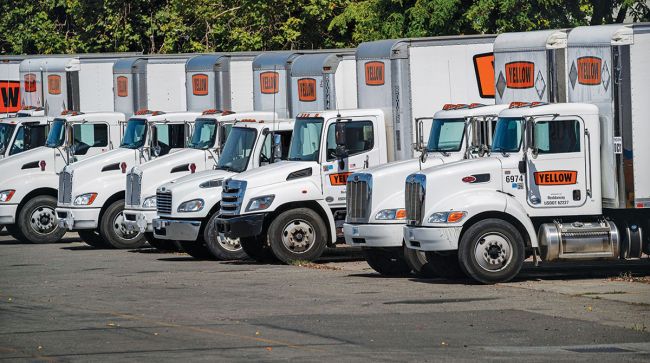The Yellow Corp. shutdown is having a downstream effect on the less-than-truckload space as freight volumes flow toward competitors.
YELLOW’S TERMINALS: Analysts expect more bids
The Nashville, Tenn.-based transportation holding company ceased operations on July 30 after nearly a century in business. It declared bankruptcy about a week later. The company was highly focused on the LTL segment through subsidiaries like YRC Freight. Its freight volumes have already started shifting to competitors, with assets expected to follow.
“There’s enough capacity in the LTL space to absorb the Yellow business,” said Kevin Day, president of the less-than-truckload business at AFS Logistics. “A lot of that has to do with just the slow progress that this all unfolded. It’s not this abrupt event that happened over a weekend.”

Day
TD Cowen noted in its second-quarter earnings review that LTL segment discussions were dominated by the bankruptcy. The investment banking company sees ArcBest Corp., TFI International and XPO as best positioned to gain the most freight, given their similar weight and pricing.
“There is ample capacity in the LTL network to absorb this freight, though it gives carriers the ability to be more aggressive on pricing despite a softer volume environment when excluding Yellow,” TD Cowen analyst Jason Seidl wrote in the report. “All carriers discussed the Yellow implications slightly differently.”
ArcBest experienced a 10% year-over-year increase in its core LTL shipments per day in late July. Old Dominion Freight Line reported that shipments incrementally increased by 3,000 to a total of 50,000 in late July. Saia reported shipments in July were up about 5% year-over-year, while tonnage had risen 2.5%. XPO reported that tonnage growth intensified throughout the month of July.
“We have deep and trusted relationships with our customers and many of them came to us for help in keeping their supply chains moving as they began to fear or feel disruption,” an ArcBest spokesperson said. “We’re in a great position as an integrated logistics company because we can work with customers to look at their supply chain across modes to find the best options..”

Mehrota
Uber Freight noted in its Q3 Market Update and Outlook Report that the Yellow shutdown is expected to increase LTL rates. The report also expects the market to take several months to adjust and absorb the volumes since Yellow represented roughly 9% of LTL market share.
“We came away most positive on the outlook for less-than-truckload companies, which is not surprising given recent developments at Yellow,” Deutsche Bank analyst Amit Mehrotra said in a report. “Saia disclosed that shipments increased 13% in the first two weeks of August and it appears volumes accelerated as the month progressed, implying an even higher exit rate.”
FourKites noted in a report that shippers had been ramping down operations and implementing contingencies ahead of the bankruptcy. The bigger concern, according to the report, is the 30,000 employees that work for the company.

Koepke
“I think enough companies have really learned their lesson that contingency planning is critical,” said Glenn Koepke, general manager of network collaboration at FourKites. “The impact was, I don’t want to say minimal because it’s such a massive scale that Yellow is, but it went really well. The residual effect, I don’t think it’s really going to be shown for 12 to 24 months, and it’s really going to be dependent on demand.”
Koepke added companies will acquire assets and personnel to fit their networks where they need to invest but the full extent of that process won’t be seen until freight demand increases since many carriers are already operating with excess capacity.
Said Carson Krieg, head of industry growth for the last-mile business at Project44: “It’s been a little bit of a mess for our retail partners as far as anything still within the Yellow network requiring essentially field rescues.”
Krieg added freight demand has been soft during the second and third quarters so there hasn’t been much in the way of capacity constraints. But he expects conditions to pick up in the fourth quarter as retailers make carrier selections.
“I think there’s going to be consolidation among the national providers that are maybe apples to apples closer on price,” Krieg said. “I think you’re going to see an increase in volume in some of the people that may have been on par with Yellow.”
Yellow ranks No. 13 on the Transport Topics Top 100 list of the largest for-hire carriers in North America.






